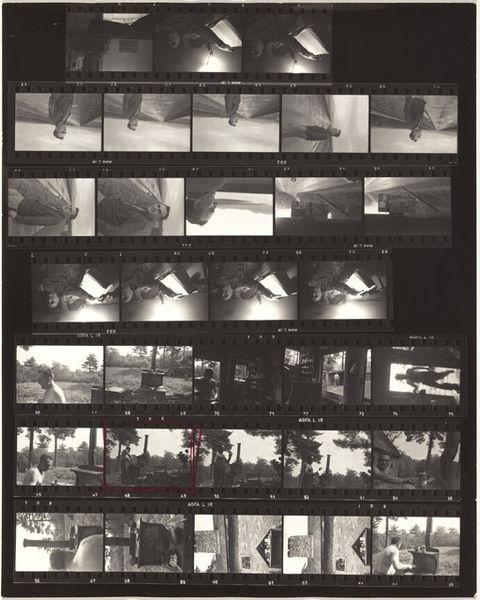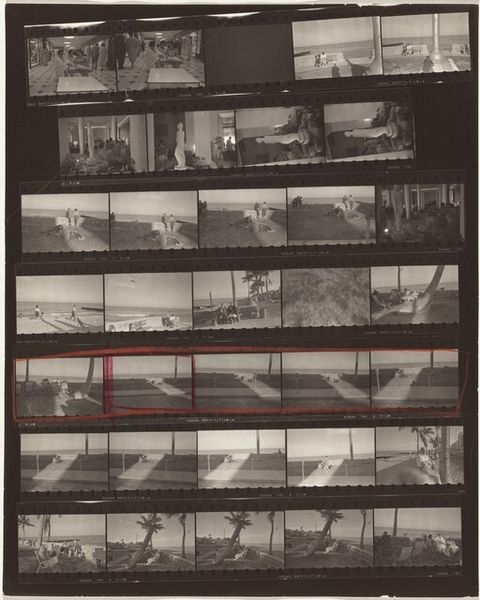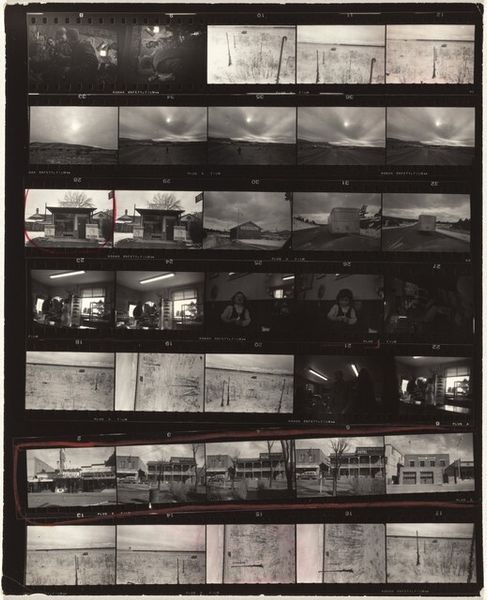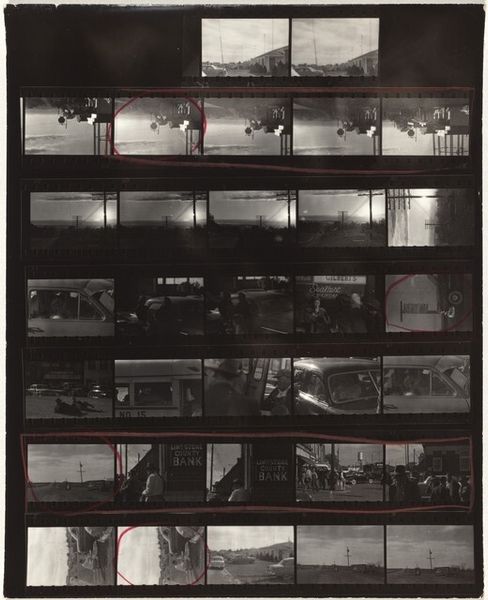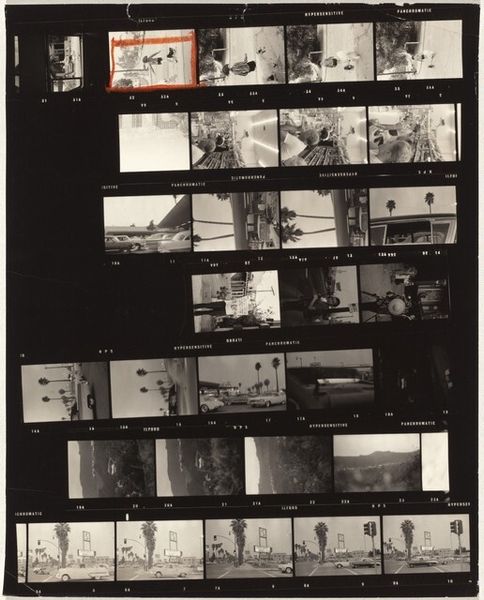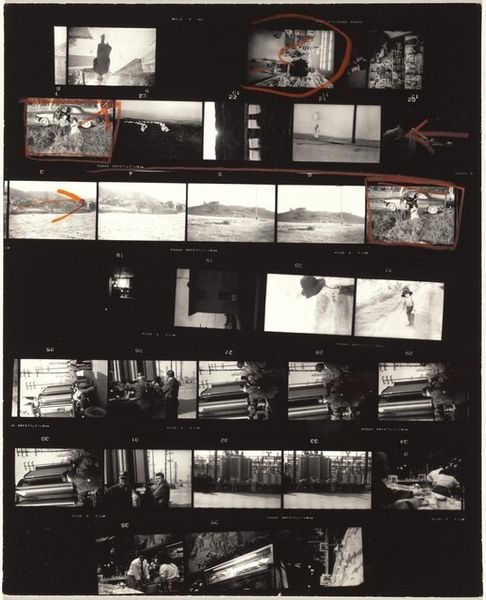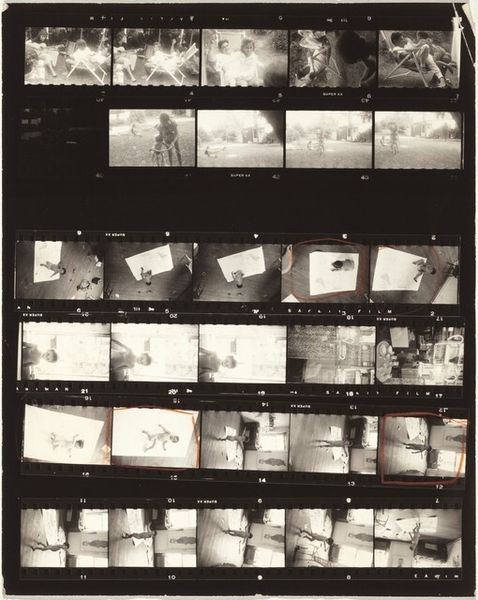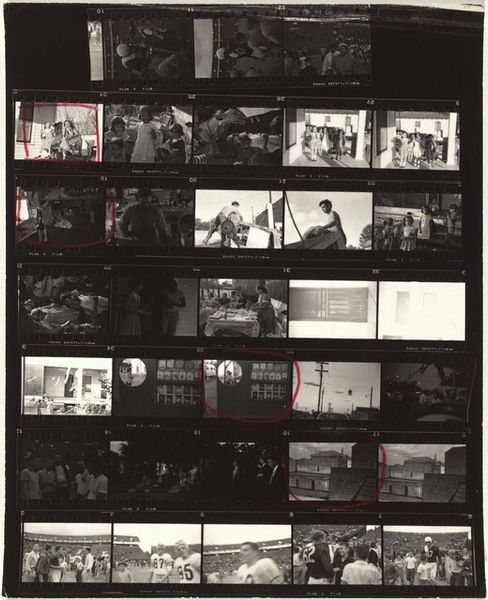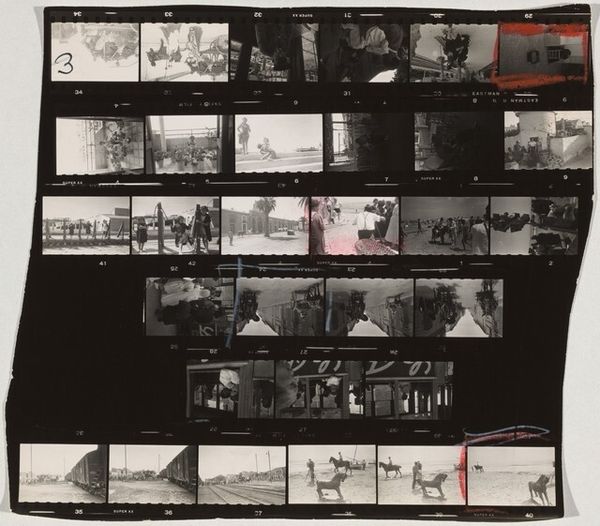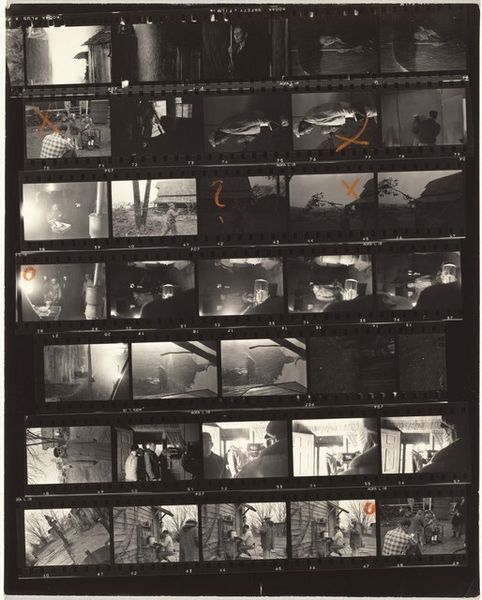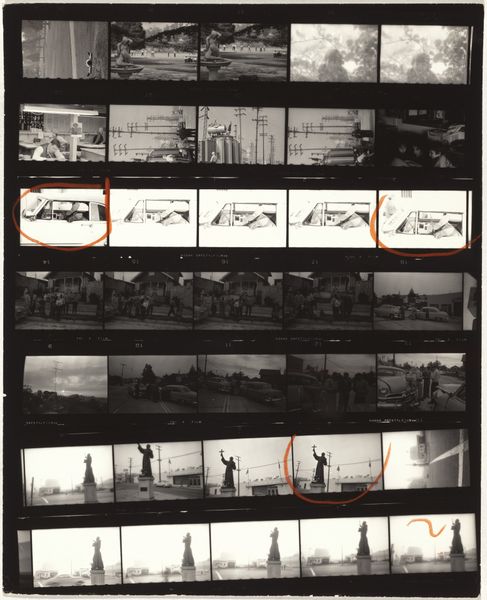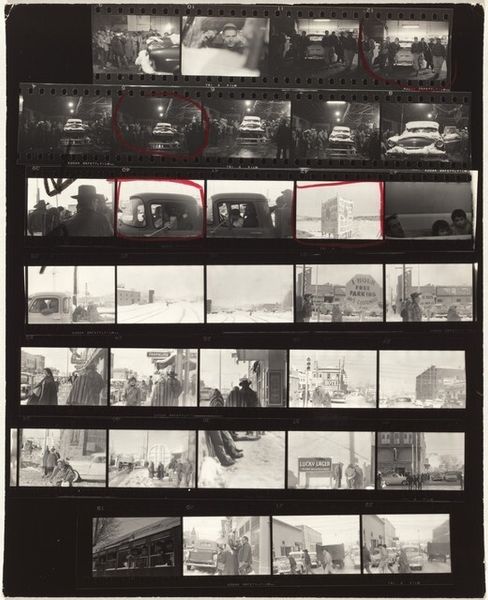
photography
#
film photography
#
landscape
#
street-photography
#
photography
#
film
#
modernism
#
realism
Dimensions: overall: 25.4 x 20.6 cm (10 x 8 1/8 in.)
Copyright: National Gallery of Art: CC0 1.0
Editor: This is Robert Frank’s "Guggenheim 373/Americans 36--U.S. 285, New Mexico" from 1955, a photographic contact sheet. It's black and white and offers a behind-the-scenes look at his process. It's fascinating seeing all these different images together, and his edits marked right on the filmstrip. What do you notice in terms of composition and the way Frank structured this sheet? Curator: The initial thing to note is the raw, unedited quality. The lines dividing the frames create a strong grid-like structure. Then we note Frank’s markings—crosses and lines indicating his selections. They draw our eye to specific frames, impacting the overall rhythm and guiding our visual reading. Note how certain strips focus on landscapes, stark roads leading into the distance. Editor: It's almost like a visual poem, the way the landscape shots contrast with those depicting people and interiors. Is there any significance to this arrangement, or is it simply a utilitarian way to view the images? Curator: I would argue the juxtaposition is deliberate. Frank is clearly interested in the formal interplay between the open road, a very American theme, and moments of everyday life, people working, portraits captured indoors. Consider the diagonal lines formed by the roads, then contrast this to the rectangular architecture glimpsed in a different strip, or even the organic, curved forms of the figures depicted outdoors. This contrast, the arrangement, the marks themselves are meaning. Editor: So, the formal elements like the lines, the shapes, and even the visible editing, contribute to our understanding? Curator: Precisely. The content is secondary to how he manipulates these visual structures to create new meaning. This work urges us to consider not only *what* Frank photographed, but *how* he composed and presented the material. The photograph becomes the object. Editor: This changes my view completely. I initially focused on what I could see of "America," the people, the places. Now I see this is more about the art of seeing itself, thanks! Curator: Indeed! Recognizing and interrogating the relationship between form and content opens up more profound understandings, enabling appreciation not just of what is seen, but how it is constructed.
Comments
No comments
Be the first to comment and join the conversation on the ultimate creative platform.
